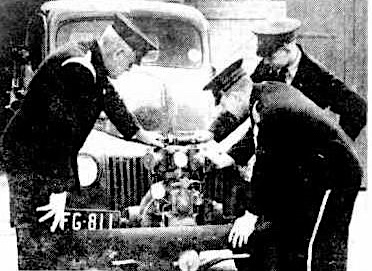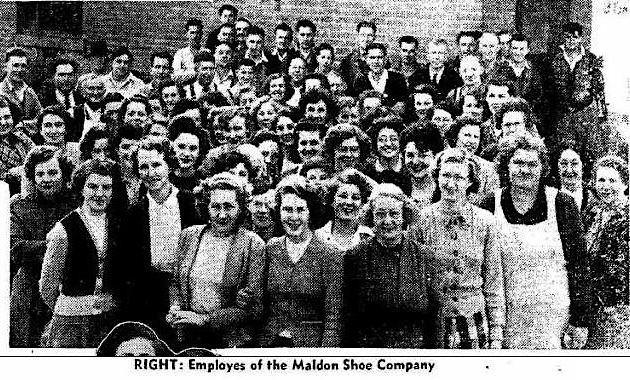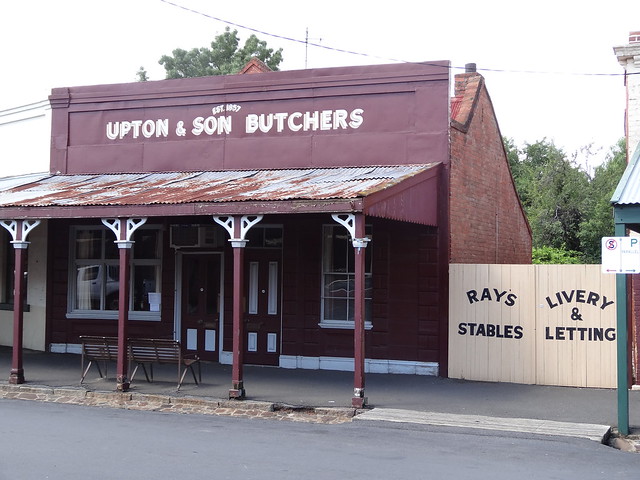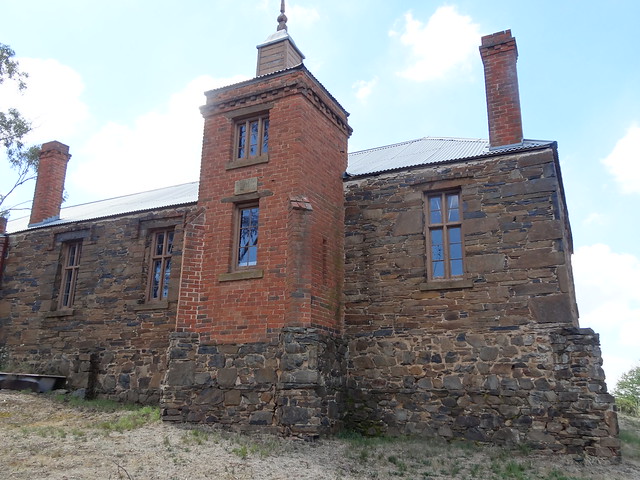Maldon is located 140km northwest of Melbourne, Australia, in the Victorian Goldfields. Maldon, due to its well-preserved gold rush heritage, was declared "Australia's First Notable Town" in 1966 by the National Trust of Australia.
The Djadjawurrung People
The Djadjawurrung Liarga balug (stringy-bark tree) people have occupied the area of Maldon, living a hunter-gatherer lifestyle, for thousands of years.
The social organisation of the Djadjawurrung is a two-class patrilineal moiety system ( (i.e. division into two groups): Bunjil (eaglehawk or wedge-tailed eagle) and Waa (crow). Effectively, the women would be exchanged between the two moieties.
Today, there are
various important Djadjawurrung sites in the Maldon region, which include artefact scatters, scarred trees, rock shelters, burial sites, axe-grinding grooves, shell middens and rock arrangements.
Initially, Maldon was earmarked as an Aboriginal settlement during Major
Thomas Mitchell's famous Victorian expedition. However, it was later decided that the Aboriginal station
which operated from 1841-1849, would be located at Loddon near Mount Tarrengower.
 |
| Australian Aboriginal warriors, circa 1905-1912. State Library of Victoria |
Many Aboriginal groups had traditions surrounding death,
whereby the traditional law forbade the mention of the name of a deceased person. After colonisation, this rule often applied to photos as well. Some people would use a substitute name for the deceased person, so that their spirit would not be disturbed.
 |
| Yung Balug/Dja Dja Wurrung man Jackie Logan in possum skin cloak, Swan Hill, Victoria, circa. 1915. Walpanumin John Logan (born Charlton 1840) was a Dja Dja Wurrung man, father of Herbert Nicholls and Grandfather to Pastor Sir Doug Nicholls. Walpanumin was the son of Lerimburneen or King Billy (c.1830-1865) who died on the Loddon River near Serpentine of the Dja Dja Wurrung/Baraparapa. |
Exploration
In 1836, Major Mitchell, whilst on his return exploration journey from Portland to Sydney, crossed the Loddon River at Newstead and passed south of Mount Tarrengower, located near Maldon.
 |
| Portrait of Major Sir Thomas Livingstone Mitchell (c. 1830s) |
The Heart of The Goldfields
Located between Castlemaine and Bendigo, Maldon became the heart of the goldfields, when John Mechosk, a Polish prospector discovered gold, at the foot of Mt Tarrangower, at Cairn Curran in 1853 (the name given to one of the sheep runs). As Maldon became
part of the gold rush, thousands of people flooded into the Maldon region.
 |
| Geelong Advertiser and Intelligencer (Vic. : 1851 - 1856), Monday 18 June 1855 |
In 1854, the Chief Commissioner for the Goldfields reported that there were
about 20,000 people at the Tarrangower diggings (as the area was known). The Castlemaine road was also clogged, with travelling people and drays. Later, gold finds in Eaglehawk and Porcupine Flat increased the population to around 40,000.
 |
| Electric Telegraph & Post Office Maldon Tarrengower. Market house in distance. Circa 1866 SLV |
Also in 1854, a survey of the town was carried out. The settlement was named after Maldon in Essex, but the town plans were mostly ignored and buildings were constructed on the roads to the diggings.
A journalist for the Argus Newspaper in that same year described the main road at Maldon as: "lined on each side
almost continuously with stores of every description, saloons, restaurants, eating houses, lemonade and beer shops, apothecaries' shops, and the tents of doctors, who I am sorry to say, drive a very lucrative business at Tarrangower."
The amount of Alluvial gold around Maldon was not so great in the end, but the underground gold-bearing quartz
brought great riches to many in almost 40 years of mining. Only Bendigo extracted greater quantities.
 |
| Stage coach laden with luggage and many Chinese people en-route to the gold fields, circa 1852-1888 |
 |
Padley's wholesale and retail ironmongery was established in 1856
|
As the gold petered out, the people began to leave Maldon to try their luck elsewhere. By 1861, the population had
fallen from a height of almost 20,000 in 1854 to 3300; and by 1891, the population stood at 1600.
 |
| Eaglehawk Consolidated Mine cyanide plant, Maldon, Victoria, circa 1903. State Library of Victoria |
Henry Handel Richardson
Ethel Florence Lindesay Richardson, better known as Henry Handel Richardson, the author of The Getting of Wisdom (1910), lived at Maldon Post Office, between 1880 and 1886, in the town's busy gold years. Richardson had fond memories of the town, particularly enjoying card nights and musical events, during the years living there, while her mother served as Maldon's postmistress.  |
| Ethel Florence Lindesay Richardson, better known as Henry Handel Richardson, the author of The Getting of Wisdom (1910), at age 21, Australian Women's Weekly (1933 - 1982), Saturday 9 September 1950 |
 |
| Maldon Post and Telegraph Office, VIC, VIEWS OF MALDON (1922, December 16). Weekly Times (Melbourne, Vic. : 1869 - 1954) |
Joseph Jenkins, The Welsh Swagman
Joseph Jenkins (1818 – 1898) was born at Blaenplwyf farm in Ceredigion, Wales. When he was more than 50 years of age, Joseph decided to leave Wales, along with his large family, to seek his fortune in Australia. As an educated man, Joseph wrote poetry and kept a diary for 58 years of his life. Excerpts from his diaries, were published many years after his death, with the title, Diary of a Welsh Swagman. Joseph also worked as a street cleaner at Maldon from 1884 until the age of 76.
 |
| Joseph Jenkins: Swagman, rural labourer and man of letters. Photo taken in 1871 |
1900s
 |
The Chinese Exhibit, Maldon, NSW, Weekly Times (Melbourne, Vic. : 1869 - 1954), Saturday 19 April 1902
|
 |
| Maldon, Victoria, circa 1904, This work is out of copyright |
 |
| Gold mining camp - Otago Reef, Sandy Creek, Maldon, Victoria - circa 1909, Kaye |
 |
Uren's General Store, Maldon, VIC, circa 1910. This work is out of copyright.
|
WWI  |
| Herald (Melbourne, Vic. : 1861 - 1954), Saturday 14 April 1917 |
 |
Dabb & Co General Store, from 1859, The 1918 Easter Procession Maldon Museum
|
1920s |
| Maldon State School, VIC, Weekly Times (Melbourne, Vic. : 1869 - 1954), Saturday 15 November 1924 |
 |
| Main St. Maldon, VIC, circa 1920 |
 |
| Easter Charities Procession in Maldon, Victoria - 1921 Kaye |
 |
| Post Office, Maldon, Victoria, c1920-1954. SLV. |
1940s
WW II
 |
Fifty camouflage nets and 144 writing boards have been made by State School boys, Maldon, VIC. Weekly Times (Melbourne, Vic. : 1869 - 1954), Wednesday 31 March 1943 |
 |
| C.W.A. members make camouflage nets, slippers for Russia and minesweepers, gloves etc. Maldon, VIC, Weekly Times (Melbourne, Vic. : 1869 - 1954), Wednesday 31 March 1943 |
 |
| Maldon District Hospital staff, VIC, Weekly Times (Melbourne, Vic. : 1869 - 1954), Wednesday 31 March 1943 |
 |
| Maldon Shoe Factory employees, VIC, Weekly Times (Melbourne, Vic. : 1869 - 1954), Wednesday 12 February 1947, |
 |
| Baxter's mining dredge has reclaimed hundreds of ounces of gold in the last five years, Maldon VIC. Weekly Times (Melbourne, Vic. : 1869 - 1954), Wednesday 12 February 1947 |
 |
| Maldon District Hospital, established in 1859, Weekly Times (Melbourne, Vic. : 1869 - 1954), Wednesday 12 February 1947 |
 |
| Maldon Fire Brigade, VIC, Weekly Times (Melbourne, Vic. : 1869 - 1954), Wednesday 12 February 1947 |
 |
| A N Davidson in his Alfa Romeo, contest with Maldon Easter Fair, VIC, Weekly Times (Melbourne, Vic. : 1869 - 1954), Wednesday 23 April 1947 |
1950s |
| Weekly Times (Melbourne, Vic. : 1869 - 1954), Wednesday 4 July 1951 |
 |
| Age (Melbourne, Vic. : 1854 - 1954), Monday 17 August 1953 |
 |
| Mail (Adelaide, SA : 1912 - 1954), Saturday 22 May 1954 |
The 1977 film about Gallipoli,
Break of Day, had some of the scenes filmed around Maldon.
Around Maldon
 |
| The Kangaroo Hotel (1866) was once a staging post for Cobb & Co coaches, Maldon, VIC |
 |
| Brooks' General Store, circa 1864, Maldon, VIC |
 |
| The foundation stone of the permanent brick structure was laid in 1860, Maldon, VIC |
 |
| Bushells Tea advertisement painted on a shop at Maldon, Victoria. Next door is the Freemasons Hall, Maldon, VIC |
 |
| Maldon Hotel, circa 1909, Maldon, VIC |
 |
| McArthur's bakery shop, circa 1900, Maldon, VIC |
 |
| Upton Butchery. An old Maldon store built around 1859, with the veranda added 1860 and the roof parapet much later in 1907 denisbin, Maldon, VIC |
 |
| Maldon Timber and Hardware was built in 1897 with the fancy advertisements on the parapet. It began life as a drapery denisbin, Maldon, VIC |
 |
| Three dimensional effect of brick work on an old cottage. McArthurs Cottage in High Street, Maldon, VIC. Built in 1860s. denisbin |
 |
| The Old Anglican Penny School, Maldon, VIC. Built 1856 and rebuilt 1862 denisbin, Maldon, VIC |
 |
| The Grand Hotel (1888), Maldon, Victoria |
 |
| Federation building, Maldon, built circa 1906, Maldon, VIC |
 |
| View of the Maldon and Phoenix Building which was constructed in 1906 and occupied first as a drapery and later as a butcher's shop, Maldon, VIC |
 |
| The former Bank of NSW complex consisted of the banking chamber (1858), an adjoining residence (1864) and smelting house (1866). 59 High Street Maldon, VIC |
 |
| Formerly Robinson's Loddon Store Cottage, circa 1958, Maldon, VIC |
 |
| Shakespeare House and gallery, circa 1907, Maldon, VIC |
 |
| McArthur's Bakery, circa 1895, Maldon VIC |
 |
| Main Street, Maldon, VIC |
Maldon is not far from
Ballarat,
Daylesford, Bendigo and
Castlemaine.
Things To Do and Places To Go
Books To Read
I Can Jump Puddles (1955),
This is the Grass (1962) and
In Mine Own Heart (1963), by Alan Marshall. His childhood growing up in rural Victoria around the turn of the century. Contracting
polio soon after attending school, the story retells the obstacles he faced as a child in trying to overcome his disability.












































